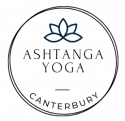
Shavasana is the ultimate relaxation pose that is mostly taken at the end of a physical yoga practice.
It’s obvious that we need Shavasana to take a rest after a physically demanding yoga practice however there are many other benefits we would experience whether we are aware of them or not.
A few main benefits of Shavasana are;
- To calm the mind
- To reduce fatigue and stress
- To calm the nervous system
- To relax and rest the muscular tension
One of the most senior Ashtanga Yoga teachers David Swenson writes the below section to explain Shavasana which is also known as ‘Corpse Pose’ in his book Ashtanga Yoga, The Practice Manual.
“We give birth to each practice session when we take our first breath in Shavasana. There is a beginning, middle, and end in the life of each practice series. There are obstacles which are confronted. There are joyful asanas and challenging ones. There are times when we are able to flow along without difficulty and times when the mind runs us ragged and the body feels heavy and unresponsive. When we have completed our routine for the day, it is time to wind down and finally to stop. To return to stillness. It is here that we enter Shavasana, the death of our practice. In this ’dying’ we may let go of the session and remain still and unattached. In this stillness we allow the gross and subtle body to absorb and assimilate prana…”
There are various ways to take Shavasana but the basic version is the most common one, to lie down on our back by keeping the feet comfortably apart, arms slightly away from the body and palms facing upwards, head straight, and eyes closed. Our body temperature tends to drop as we begin to relax so it’s always a good idea to cover the body with a blanket even if you are not cold.
You might have come across more complicated versions with props such as extra blankets, eye pillows, bolsters, etc. These props also help to deepen the experience of relaxation. If you are taking a long Shavasana or doing particularly a gentle practice such as restorative or yin these props are really functional.
Another way of benefiting from Shavasana is to take it after (or between rounds) breathing exercises even if it’s a minute long or so.
*
Here, let’s look at our autonomic nervous system closer as it has a deep connection with relaxation. The autonomic nervous system controls some of the vital body processes such as digestion, blood circulation, heartbeat, and body temperature.
There are two types of the autonomic nervous system;
- Sympathetic autonomic nervous system (SNS): Its primary function is to stimulate the “fight or flight” response.
- Parasympathetic autonomic nervous system (PNS): Its primary function is to stimulate the “rest and digest” response.
We all live in a frantic world, mostly in a “fight or flight” mode in our everyday lives. SNS seems to be switched on all day long at work or home, with friends or family… Although this is a vital mechanism to help us survive, it needs to cool down from time to time to be able to function better and respond faster. The parasympathetic nervous system is what we use to cool it down.
Most of the yoga classes (asana classes) are dynamic and physically challenging so they tend to fire up our SNS. Shavasana is the best way to cool it down and activate our PSN to begin calming and resting the body&mind.
Shavasana turns out to be a great opportunity to train ourselves to slow down and help our nervous system function better. So when you take Shavasana next time why not try to hold it only 1 minute longer than usual rather than rushing things.
If you join a yoga class with me you will hear me encouraging you not to finish the practice without resting well.
Here are a couple of great sources I can recommend if you wish to read further on this topic,.
- Buddha’s Brain (Richard Hanson Ph.D. with Richard Mendius MD)
- One Simple Thing (Eddie Stern)
See you in class soon.
Ezgi, January 2023
